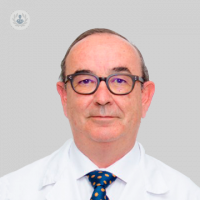Addressing migraine from Neurology
Written by:Migraine results in severe pain of varying intensity head, frequency and duration, which can also lead to other symptoms associated. Although very common, it is also very disabling for the person who suffers. There are two treatment modalities, one for migraine attacks and other preventive.

Migraine: what it is and symptoms
It is understood by all migraine headache or pain or discomfort localized in the head and whose topography does not match the range of the sensory nerves that innervate the sensitive parts of the head.
It consists of attacks head pain varies in intensity, frequency and duration, usually unilateral and associated with nausea and vomiting, being sometimes associated with sensory-motor visual language and mood disorders.
It is a common disease that affects 10-20% of the population and is twice as common in women. It is estimated that 40% of men and 50% of women have suffered incapacitating headache once in your life. In adolescents, 20% typical migraine sufferers.
The characteristics of the migraine syndrome include:- headache- Gastrointesinales discomfort, including anorexia, nausea, vomiting, bloating, constipation or diarrhea- irritability- Phonophobia and photophobia- Cold extremities- disorientation- sweating- vertigo- Auras as transient loss of vision or blurring, photopsia (see lights or flashes) or hemianoptsia (transient blindness)- Alterations in speech- Olfactory hallucinations or hearing- Mood disorders
Diagnosis of migraine
To achieve its diagnosis is essential medical history: duration, frequency, location, character, intensity and type of pain. It must also be considered the existence of triggers and accompanying symptoms, such as:- Scotoma or partial loss of visual field- Or temporary blindness amaurosis- tinnitus- rhinorrhea- dizziness- Focal motor and sensory disorders- Impaired consciousness
This exploration will be completed by the expert in Neurology and relevant additional neurological tests.
Causes of Migraine
As mechanisms responsible for headaches or migraines have been postulated as follows:- Pulling the veins that drain into the venous sinuses- Pulling the large arteries at the base of the brain and its main branches- Distention and dilation of intracranial arteries- Inflammation of some of the pain-sensitive structures- Direct pressure of some processes on the cranial sensory nerves or cervical- Other pain-sensitive structures, such as skin, subcutaneous tissue, periosteum epicranial, paranasal sinuses, nasal cavity structures, structure of the eye, trigeminal nerve, glossopharyngeal and vagus.
Classification of migraines
In the classification of headaches or migraines include, in general:- Common Migraine- Migraine without aura- Migraine with visual aura, which presents different types: familial hemiplegic, basilar migraine visual aura, aura without headache.- Migraine accompanied prodromal sensory motor and speech- Other types of migraine, such as ophthalmoplegic, retinal migraine status, cardiac migraine, migraine disorder atypical ...- Headache voltage. It is one of the headaches or more frequent migraines, with triggers such as stress, insomnia, anxiety and a depressive component.- Clusters or cluster headache and chronic paroxysmal hemicrania. Are clinical challenges of magnitude.- Mixed tension and migraine headache- Associated with head trauma or stroke Headache (ACV)- Headache giant cell arteritis type of temporal artery with risk of blindness- Expansive brain neoplastic, metabolic, or myofascial temporomandibular dysfunction syndrome- Cranial trigeminal neuralgia, glossopharyngeal, nasociliary, laryngeal, postherpetic a.
Genetic factor in migraine
The genetics of migraine suggests an inheritance autosomal dominant trait, there 70% of patients with familial history.
It has been found that patients of migraine with aura have an associated variant of chromosome 8 that do not patients with common migraine without aura gene.
Recent genetic discoveries show four genes in patients with migraine, which are: MEF2D, TGFBR2, PHACTR1 and ASTN2 discovered by the Research Institute Hospital Vall d'Hebron of the University of Barcelona. However, they are also environmental, hormonal, psychological and epigenetic factors which play a major role in the development of migraine.
Migraines and Neurology
Arterial dilation and vasospasm produced during migraines have been explained by two theories: the neural and vascular.1) neural Theory. This theory postulates that discharges of low frequency in the locus coeruleus (brain region involved in the panic and stress) determine a narrowing of a cerebral blood vessel (cortical vasoconstriction), causing a second wave of oligohemia or reducing the usual amount of circulating blood.Conversely, high frequency discharges are conditions of extracranial vasodilation. The phenomenon spread oligohemia begins in the visual area, with progression to the cortex from 2 to 34 minutes. This phenomenon of inhibition of neuronal activity acute, intense and transient form, has a biochemical, hemodynamic and electrophysiological expression.The final pathway is altered vascular smooth fiber with narrowing of a blood vessel (vasoconstriction) and vasodilatation, by release of neurotransmitters, which causes painful crisis.2) vascular theory. Explains the painful condition by appearance of a serotonin releasing factor causing vasoconstriction and aura, and produces nausea and vomiting. The alteration in the hypothalamus and limbic system suggests the role of emotions in triggering.
Migraine triggers
There triggers involved in the crisis of migraine. They may be dietary factors, such as hunger, alcohol and snuff. Also food, because food containing thiamine, dopamine, phenylethylamine, monosodium glutamate and sodium nitrite can cause headache. Sodium nitrite is as a preservative and colorant in cured meats and sausages. Tyramine in aged cheeses, yogurt, very ripe bananas, avocados, peanuts, pickled herring or chicken liver. Dopamine is in the sheath of broad beans and caffeine. And, phenylethylamine found in chocolate, cola and tea. However, caffeine relieves migraine.
There are also atmospheric factors, as bright clouds, snow, sun, wind or strong odors can trigger migraines. Also emotional or behavioral, such as insomnia and stress factors.
Treatment of migraine
Regarding treatment, first include non-pharmacological treatment based on eliminate triggers: lead a relaxed life with physical exercise or sport of moderate intensity and a balanced diet.
Drug treatment is specific medication for migraine attacks and preventive treatment:- Treatment for migraine attacks. To treat migraine there are oral, intranasal and triptans flash profile. Also it ergot and derivatives, but practically not used because of side effects. Anti-inflammatories (NSAIDS) are also effective in some cases and conventional analgesics. Very intense and rebellious crises morphine derivatives are also provided.- Preventive treatment. It is effective in 60% of cases. edrenérgicos drugs beta-blockers, calcium antagonist drug, sodium valproate or antidepressants are used. They are also used in very specific cases, acupuncture and botulinum toxin.
Edited by Patricia Crespo Pujante


